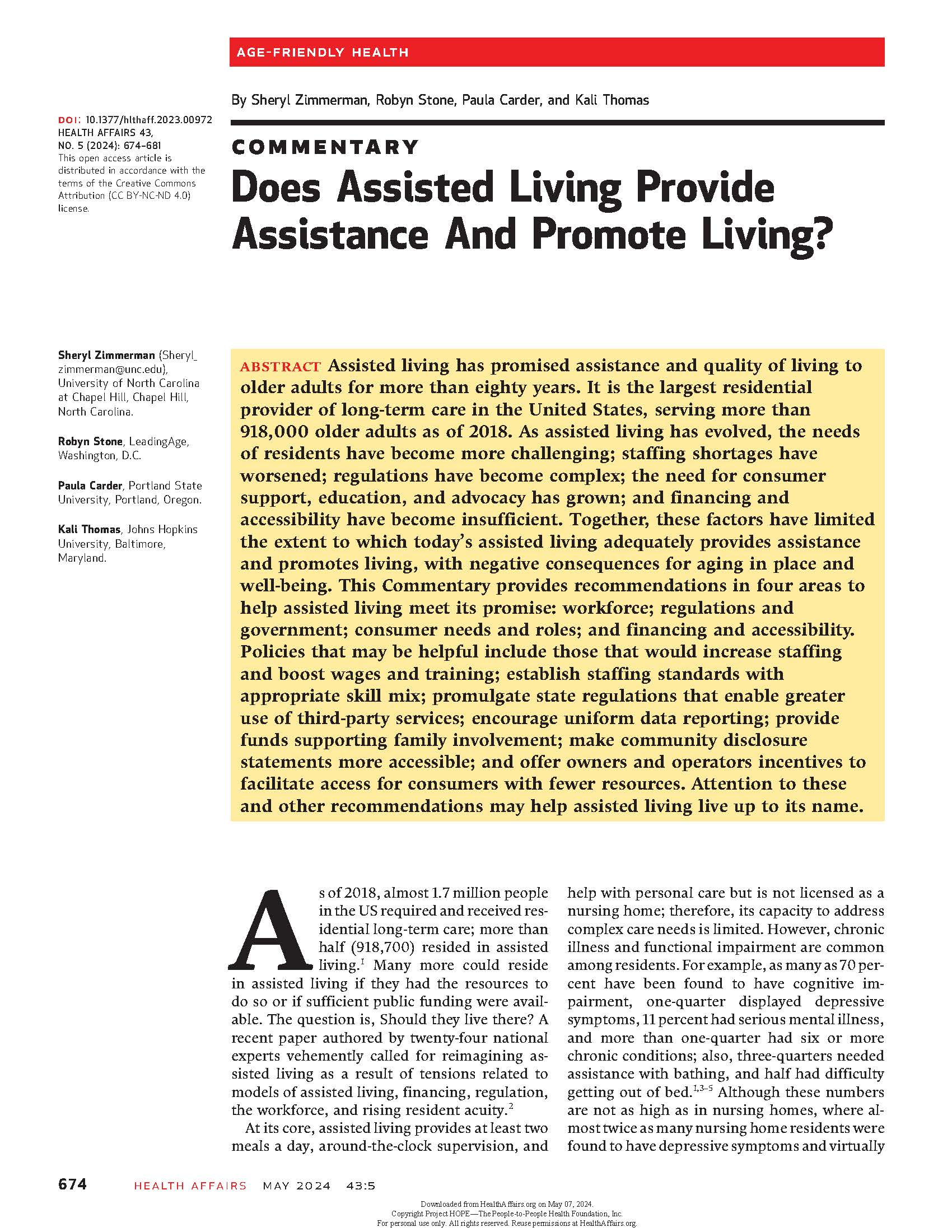PURPOSE: Falls are a significant financial burden and health hazard for residents in assisted living facilities (ALFs). However, limited capacity to observe residents has hindered understanding of resident–staff interactions within rooms. The current study aimed to describe nurse–resident interactions using data from a remote technology combining computer vision and staff location tracking. METHOD: Eighty-three staff […]
Journal of Gerontological Nursing
Do-Not-Hospitalize Orders in Assisted Living Facilities: Direct Care Workers’ Perspectives
Do-Not-Hospitalize Orders in Assisted Living Facilities: Direct Care Workers’ Perspectives
WHAT THIS MEANS FOR YOU: Eight participants were surveyed and interviewed to inform an intervention that would prevent direct care workers from sending residents with do-not-hospitalize orders to the hospital. Results revealed care workers were unfamiliar with do-not-hospitalize orders and had binary thinking (e.g., residents had to be sent to hospice or the hospital) on end-of-life issues. Supportive leaders in the assisted living communities that could assist direct care workers during these complex situations were found to be helpful.
Using Assisted Living Communities to Enhance Nursing Student Attitudes Toward Older Adults
Using Assisted Living Communities to Enhance Nursing Student Attitudes Toward Older Adults
WHAT THIS MEANS FOR YOU: A total of 70 nursing students at one Western US university participated in a clinical project in which they interviewed an AL resident and provided an educational session to residents at an AL community. Students, AL communities, and instructors all reported positive experiences in this clinical experience, and students reported more positive attitudes towards older adults.
Effect of Quarantine on Body Weight Among Residents of Assisted Living Facilities During the COVID-19 Pandemic
Effect of Quarantine on Body Weight Among Residents of Assisted Living Facilities During the COVID-19 Pandemic
WHAT THIS MEANS FOR YOU: During the COVID-19 pandemic, 40% of 53 assisted living residents who had been in room quarantine experienced significant weight loss; men had a greater risk of significant weight loss than women. If quarantine is used for future epidemics, weight should be monitored and reported to avoid negative health outcomes associated with rapid weight loss.
Social Connectedness Resource Preferences of Older Adults in Assisted Living: A Scoping Review Based on the WHO-ICF Framework
Social Connectedness Resource Preferences of Older Adults in Assisted Living: A Scoping Review Based on the WHO-ICF Framework
WHAT THIS MEANS FOR YOU: A literature review examined the social activities preferred by assisted living residents, finding that residents preferred social activities organized by the community, such as games and outings. They also preferred civic life activities (e.g., volunteering) to connect with the broader community. Older residents and those living in larger communities tended to prefer activities provided by the community, while younger residents preferred more demanding physical activities.
Successful Aging in Assisted Living: The Importance of Near Visual Acuity
Successful Aging in Assisted Living: The Importance of Near Visual Acuity
Successful aging among independent community-dwelling older adults and those in residential settings is paramount to aging in place. The purpose of the current study was to explore how sensory, cognitive, and functional impairments affect successful aging in assisted living (AL) settings. Vision compromise was noted for near visual acuity (NVA) (14.3%) and distance visual acuity […]
Pilot Testing of the Promoting Positive Care Interactions Intervention in Assisted Living
Pilot Testing of the Promoting Positive Care Interactions Intervention in Assisted Living
WHAT THIS MEANS FOR YOU: Promoting Positive Care Interactions, a staff training program to establish positive care interactions with residents, was tested with 17 care staff in the memory care unit of one assisted living community. Although there were no significant changes in staff outcomes, participants’ perception of the community’s environment and policies improved, and staff showed good engagement throughout the study.
Replication of Implementing a Sit-to-Stand Exercise Program in an Assisted Living Facility
Replication of Implementing a Sit-to-Stand Exercise Program in an Assisted Living Facility
WHAT THIS MEANS FOR YOU: A 20-bed AL community in rural North Carolina implemented a sit-to-stand exercise program (i.e., having residents rise from a sitting position and then sit back down). A total of 13 residents participated in the program which was offered twice daily over 82 days. The average attendance rate for participants for all sessions was over 90%, and each participant was able to complete all 5 exercises during each session. Over the course of the program participants saw modest increases in average activities of daily living independence scores; however, these changes were not statistically significant. Activities that were measured included toileting, bathing, dressing, transferring, and continence.
Social Networks in Retirement and Assisted Living Communities: A Literature Review
Social Networks in Retirement and Assisted Living Communities: A Literature Review
WHAT THIS MEANS FOR YOU: A systematic review showed that from 2015 to 2020, older adults in AL or retirement communities who had stronger social connections experienced improved health, and that over-reliance on only family for social interactions was associated with loneliness. Related recommendations to reduce loneliness include fostering diverse social networks and overcoming barriers like the inability to select roommates, lack of phone access, and potentially isolating community layouts.


